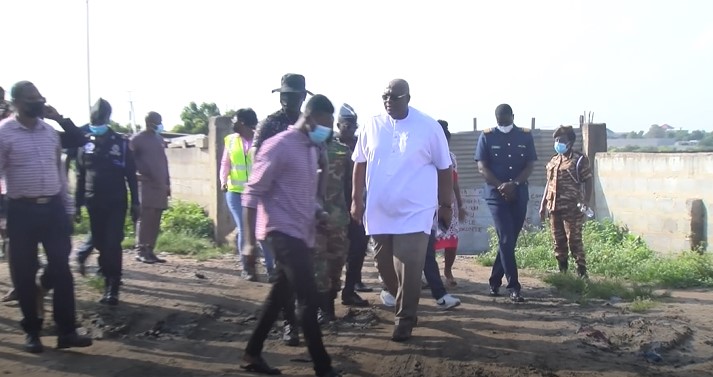Officials of the Greater Accra Regional Security Council and the Lands Ministry will, from Wednesday, October 19, begin demolishing structures on waterways at the Sakumono Ramsar Site.
The move is to help avert any possible flooding situation similar to what happened in Weija and surrounding areas.
The 1,200 acres of the Sakumono Ramsar site hold thousands of gallons of water each year to prevent flooding in the surrounding communities.
But this is now under threat due to mass encroachment on the land.
Areas like East Legon and the Tema Motorway have been predicted to flood in the near future if the site goes extinct.
Speaking to JoyNews ahead of the exercise, the Regional Minister, Henry Quartey, said occupants of the land have been given enough notification to leave; hence, the action.
He said the move has been endorsed by traditional authorities there.

“We are going there to ensure that buildings that are sited in the core area of Ramsar, in the water, are [demolished]. The law mandates the assemblies to remove such buildings; so, that we shall do.
“We’ve been talking about Ramsar in the last two months; we believe we’ve had over 70 days’ notice, which is enough for them. Any time we speak, they go ahead and build with impunity,” he explained.
The Deputy Lands and Natural Resources Minister, Benito Owusu-Bio, explained the move has become necessary.
“It is clear when you go there you will see the buildings or the structures that are sited in the waterway, those are the ones we are concerned about.
“We’ve all seen how of late it’s raining; we don’t want what happened at Weija to happen over there because they are very close to the sea and as such a disaster can happen.”
Originally spanning over 3,500 acres, the Sakumono Ramsar site is one of five in Ghana. It serves as holding bays for thousands of gallons of rainwater from the adjoining communities.
According to a 2019 report by the Center for Remote Sensing and Geographic Information Services (CERGIS), if care is not taken, the Ramsar site may soon exist no more.





